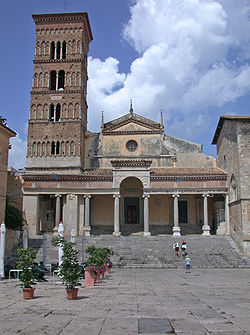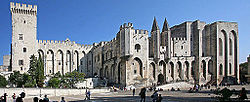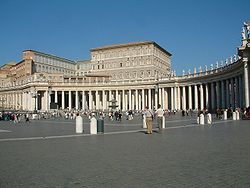
Papal elections since 1276 have taken the form of conclaves, which are elections that follow a set of rules and procedures developed in In nomine Domini (1059), Ubi periculum (1274) and later papal bulls; observance of the conclave varied until 1294, but all papal elections since have followed relatively similar conclave procedures. [1]
Contents
Although the cardinals have historically gathered at a handful of other locations within Rome and beyond, only five elections since 1455 have been held outside the Apostolic Palace. [2] Twenty-eight papal elections have been held outside Rome, in: Terracina (1088), Cluny (1119), Velletri (1181), Verona (1185), Ferrara (October 1187), Pisa (December 1187), Perugia (1216, 1264–1265, 1285, 1292–1294, 1304–1305), Anagni (1243), Naples (1254, 1294), Viterbo (1261, 1268–1271, July 1276, August–September 1276, 1277, 1281–1282), Arezzo (January 1276), Carpentras/Lyon (1314–1316), Avignon (1334, 1342, 1352, 1362, 1370), Konstanz (1417) and Venice (1799–1800). Three elections moved between locations while in progress: the elections of 1268–1271, 1292–1294, and 1314–1316.









